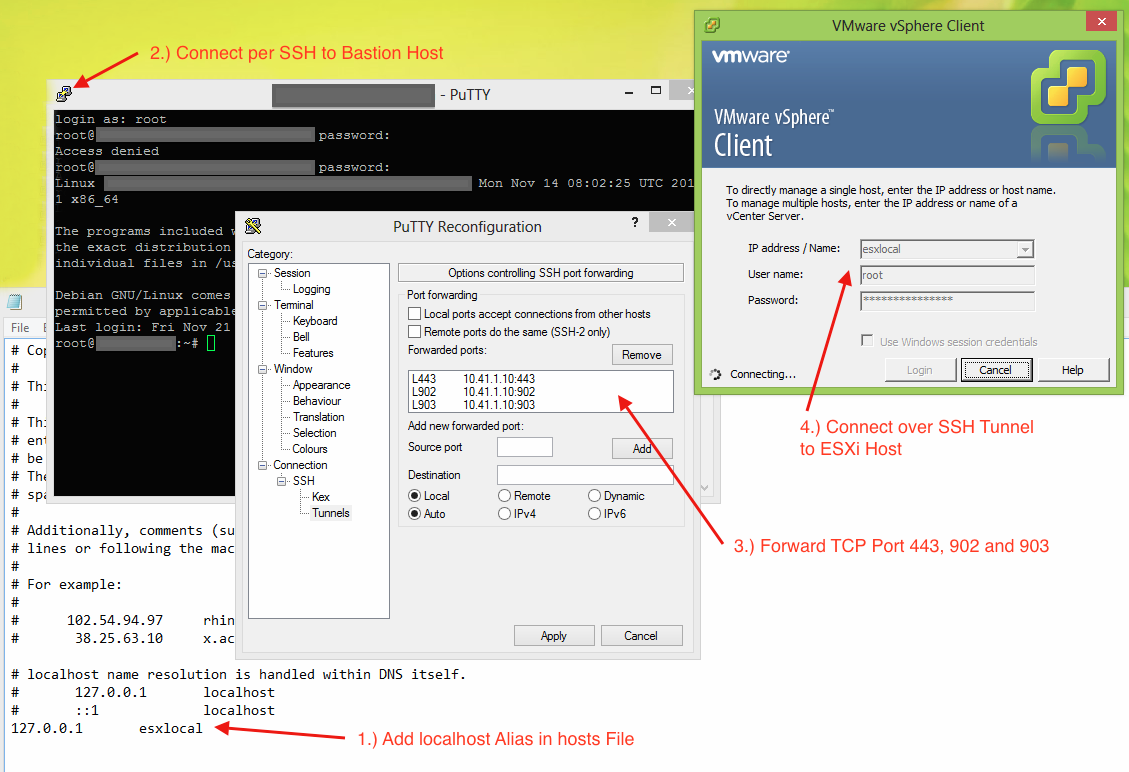

Furthermore, we've learned that the connection is active for a short amount of time in which we have to open an ssh tunnel if we want to gain and maintain access to the private instance.
#Ssh tunnel through bastion host how to
In this article we've covered how to setup a connection with a bastion host using the AWS CLI and ec2-instance-connect service. Try pasting it somewhere else and copy it again.
#Ssh tunnel through bastion host password
Keep in mind that sometimes the password doesn't work if copied directly from aws. Having all this information use the username, password, dbname, port and engine to connect to the database in the IDE of your choice. In the Secrets Manager dashboard in AWS console, find the secret generated for the database service and retrieve secret value. The ec2-instance-connect lasts for a limited amount of time - make sure to have both commands ready with all the placeholders replaced with appropriate information and use them in quick succession otherwise it could deny entry. In order to get the database private domain go to rds clusters and find the endpoint in Connectivity & security tab in cluster details The next thing is to modify our local ssh config file which is typically located in ~/.ssh/config (Linux and MacOS) or C:\Users\username\.4 get this to work, you have to replace local_port, database_private_domain and bastion_host_instance_id. The benefit of using Session Manager is that the bastion host will now reside in a private subnet and its security groups won’t allow any inbound traffic. Creating the SSH tunnelĮven though we said that Session Manager eliminates the need for maintaining bastion hosts, in order to access resources in our private subnet, we still need to create an EC2 instance that will serve as a bastion host. Numerous tutorials popped out, but none of them thoroughly explained the complete process of creating the ssh tunnel. So naturally, the first thing we searched on google was ‘AWS Session Manager tunneling’. How we did this in the past is by creating a ssh tunnel via our public bastion host and accessing the private MySQL RDS instances. We still need a way to access our RDS instances residing in a private subnet. However, we won’t go into the details of setting up Session Manager for your EC2 instances since the official documentation is detailed enough and you can also check it out here.įurthermore, the Session Manager capability seems to be an improvement to our cloud security, but now we are facing a new challenge. AWS Session Manager provides us with secure instance management without the need to open inbound ports or maintain bastion hosts. Session Manager is a capability of AWS Systems Manager which allows us to manage the EC2 instances through an interactive one-click-browser-based shell or through the AWS CLI.

Even though we make sure to harden the bastion host so it won’t represent a security issue, the issue with this approach is that the bastion host resides in a public subnet and ingress rules do allow connections from the outside world.

This resulted in creating an extensive list of requirements that should be implemented for all existing and future projects.Īs of right now, almost all of the projects make use of an EC2 instance which acts as a bastion host (jump box) and provides us a way of accessing resources in our private subnets. For the past several months, the DevOps team in our organization has worked on finding ways to increase the security of our AWS cloud infrastructure projects.


 0 kommentar(er)
0 kommentar(er)
